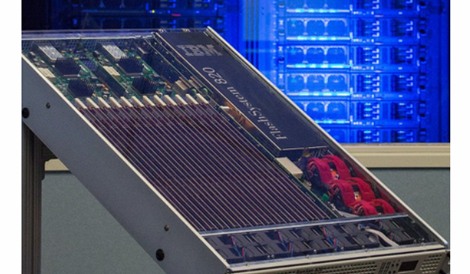IBM has unveiled a strategic initiative to drive Flash technology further into the enterprise to help organizations better tackle the mounting challenges of big data.
It is investing US$1bn in research and development to design, create and integrate new Flash solutions into its expanding portfolio of servers, storage systems and middleware.
Flash, a highly efficient re-writable memory, can speed the response times of information gathering in servers and storage systems from milliseconds to microseconds – orders of magnitude faster. Because it contains no moving parts, the technology is also more reliable, durable and more energy efficient than spinning hard drives.
Such benefits have led Flash to pervade the consumer electronics industry and be built into everything from cell phones to tablets. Today, as organizations struggle with swelling data volumes, increasing demand for faster analytic insights, and rising data center energy costs, Flash is quickly becoming a key requirement to enable the Smarter Enterprise.
“The economics and performance of Flash are at a point where the technology can have a revolutionary impact on enterprises, especially for transaction-intensive applications,” Ambuj Goyal, general manager of systems storage for the IBM Systems & Technology Group, said.
“The confluence of big data, social, mobile and cloud technologies is creating an environment in the enterprise that demands faster, more efficient, access to business insights, and Flash can provide that access quickly.”
As part of IBM’s commitment, the company today also announced plans to open 12 Centers of Competency around the world.
These sites will enable clients to run proof-of-concept scenarios with real-world data to measure the projected performance gains that can be achieved with IBM Flash solutions.
IBM said clients will see first-hand how IBM Flash solutions can provide real-time decision support for operational information, and improve the performance of mission-critical workloads, such as credit card processing, stock exchange transactions, manufacturing and order processing systems.
The Centers of Competency will be operational by the end of the year in China, France, Germany, India, Japan, Singapore, South America, UK and the US.
IBM today also announced the availability of the IBM FlashSystem line of all-Flash storage appliances, which are based on technology acquired from Texas Memory Systems.
The IBM FlashSystem provides organizations instant access to the benefits of Flash. The IBM FlashSystem 820, for example, is the size of a pizza box, is 20 times faster than spinning hard drives, and can store up to 24 terabytes of data – more than twice the amount of printed information stored in the US Library of Congress.
IBM said clients of its FlashSystem have experienced up to 90% reductions in transaction times for applications like banking, trading, and telecommunications; up to 85% reductions in batch processing times in applications like enterprise resource planning and business analytics; and up to 80% reductions of energy consumption in data center consolidations and cloud deployments.
Sprint Nextel, an early adopter of Flash, recently completed a deal with IBM to install nine IBM FlashSystem 820’s in its data center, for a total of 150TB of additional Flash storage.
The company was looking for a way to improve the performance and efficiency of its phone activation application. When performance rose and energy consumption dropped, the company began to expand the technology to other parts of the data center.
According to Sprint officials, this latest installation is part of the company’s new strategy to move its most active data to all-Flash storage systems.
The new IBM FlashSystem join the company’s growing stable of all-Flash and hybrid (disk/Flash) solutions which include IBM Storwize V7000, IBM System Storage DS8870, and the IBM XIV Storage System.

